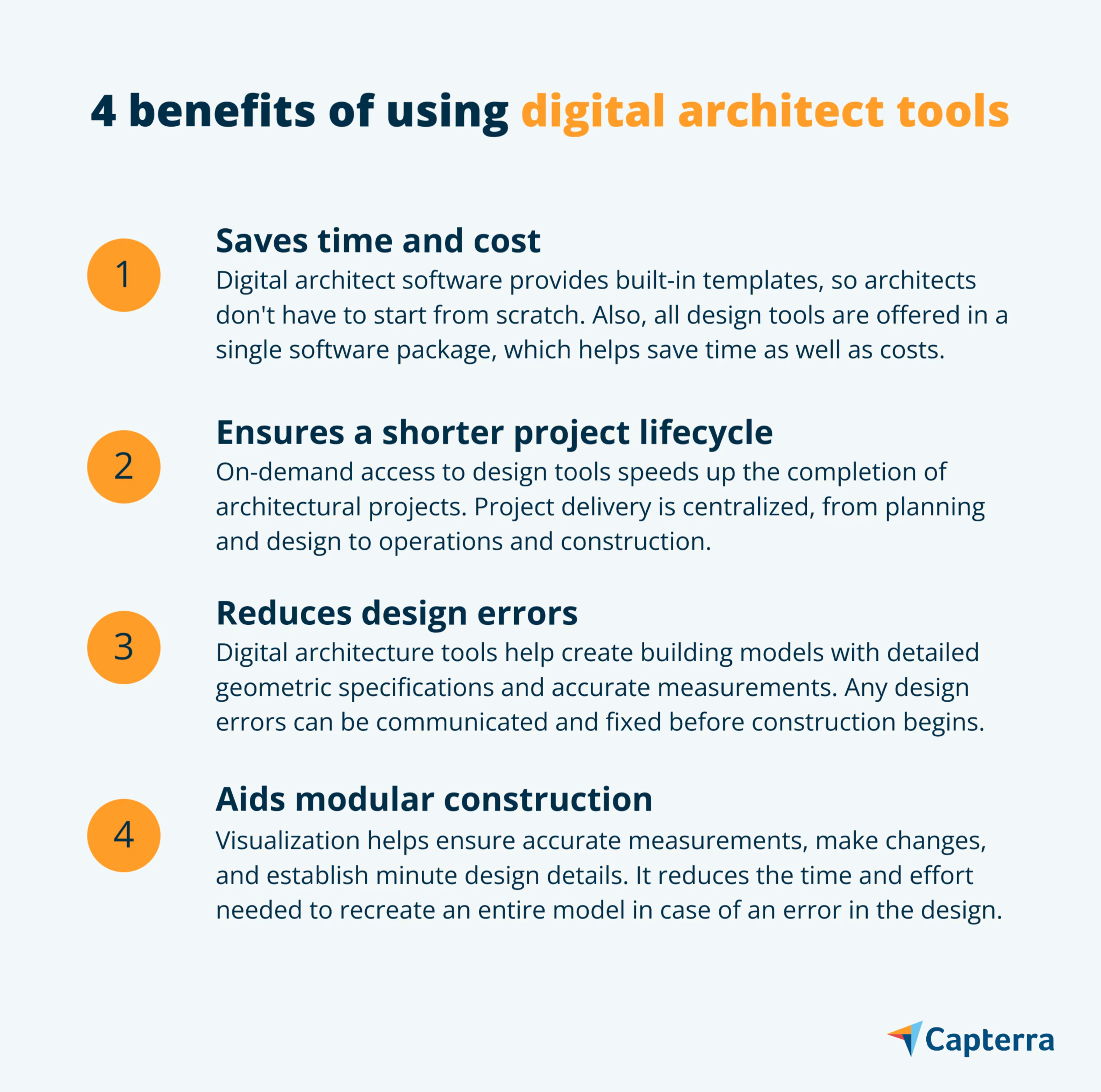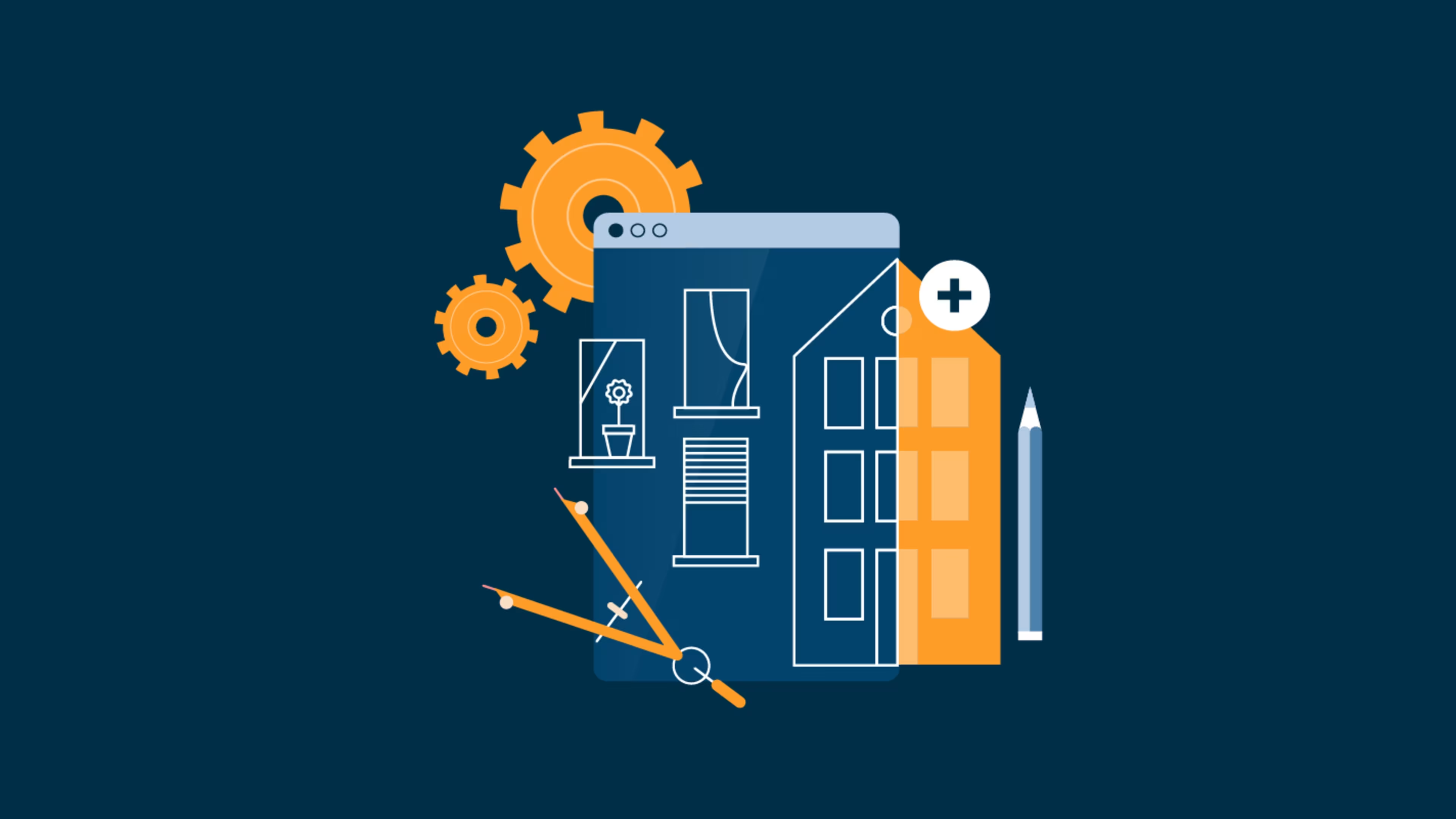Digital architect tools help create complex building models and floor plans with precision.
Architecture firms are adopting new technologies in the form of software solutions and gadgets to meet the high-end needs of today’s construction industry. Have you ever wondered why?
Historically, architects used pen and paper to ideate architectural designs, such as building models, blueprints, and floor plans. These on-paper designs were stored and shared with clients in the physical form. However, challenges such as misplaced papers and inaccurate measurements had architects looking for efficient alternatives.
Architects gradually shifted to embracing technology and digital tools. Today, architecture firms use various digital architecture tools—from design tools to workflow management tools—to create complex building models and floor plans with precision. These tools also help manage the project workflow to ensure on-time completions.
If you manage architectural plans or projects and are looking to digitalize manual design workflows, this blog is for you. We explain the benefits of using architect software tools to streamline processes and speed up work. The goal is to help digitalize your architectural practice to save time and increase efficiency.
But before we start, let’s understand the basics of digital architect tools.
What are digital architect tools?
Digital architect tools range from software solutions such as design and project management systems to gadgets such as electric pencils. Both software tools and technology gadgets work together to improve and enhance the architectural design process.
The availability of multiple options on the market makes the selection process challenging, especially when unsure how each tool works. Here are a few examples of the most used digital architect tools:
Gadget | Software |
3D pen: Allows you to draw building models or designs without using paper. It uses plastic ink to let you create objects on any surface. | **Architecture software: Allows you to create and organize architectural designs. It helps manage daily workflows by automatically aligning tasks to team members and tracking their progress. |
Virtual reality glasses: Allows you to take a virtual tour of a building before construction is complete. | **3D architecture software: Allows you to create 2D and 3D structural building models, floor plans, blueprints, and more on a computer or mobile device. |
Portable color digitizer: Allows you to pick colors from any surface and use it in your building design. | **3D CAD software: Allows you to create 3D building designs. It also helps automate processes such as checking design errors, sketching, and drafting. |

1. Saves time and costs
Using traditional drawing and document management methods, such as mechanical pencil, drafting tape, and tracing paper, consumes a lot of your time. You have to create architectural designs on a sketchbook or piece of paper and manually organize them in file folders for your clients.
Digital tools such as architecture software provide built-in templates that can be customized as per your construction project. You can select any suitable option from a range of building design and floor plan templates. As these templates are pre-designed, you don’t have to start designing from scratch, which helps save time. In addition, all the design tools you need are offered in a single software package, so you don’t have to purchase separate tools.
Besides software solutions, you can also use gadgets such as 3D pens to move away from the classic pencil-and-paper duo. A 3D pen allows you to create a building model on any surface without using tracing paper. Just like architecture software, it helps save costs on purchasing multiple stationery items.
2. Ensures a shorter project lifecycle
On-demand access to design tools speeds up the completion of your architectural project. As all design elements are consolidated into a single software solution, you don’t have to keep toggling between multiple apps.
For instance, you can use 3D architecture software to create and visualize structural building designs, floor plans, and blueprints in 3D. You can use its building information modeling (BIM) functionality to manage and centralize project delivery, from planning and design to operations and construction. You can also check for design errors, identify potential structural issues, and make changes before the actual construction begins—all using a single centralized platform.
You can also use tech gadgets such as virtual reality (VR) glasses to give stakeholders a virtual tour even before construction begins. Clients can view the finished outcome and virtually model rooms and furniture to check whether they would like to invest. The faster you get approvals from clients, the sooner you can push the project to construction. The time you save can be used to take up more projects and boost profits.
3. Reduces design errors
Using digital architecture tools helps you better communicate your ideas to clients, contractors, and other stakeholders involved. You can create highly interactive building models with detailed geometric measurements and specifications. Detailed structures allow stakeholders to better visualize your design ideas, thereby leading to faster decision-making.
In addition, you can identify potential design errors that could lead to construction hazards. Building damages due to weather or natural calamities are some potential construction hazards caused due to a poor building design.
With 3D architecture software, you can assess a building design from all angles to check the connections between various parts of the building. If you find any design errors, you can communicate them to the contractor before construction begins.
4. Aids modular construction
Using digital architecture software, you can create modular pieces of architectural design models that fit together perfectly during construction. The visualization functionality allows you to achieve accurate measurements, make changes, and establish minute details in any architectural drawing. Accurate measurements help reduce the time and effort required to recreate the entire building model if there’s an error in the design. Plus, they save the cost of building reconstruction.
Here are the different types of dimensional information offered by BIM software solutions to better view and customize your design:
3D BIM: Visualizes the height, width, and depth of an architectural design.
4D BIM: Adds the time element to measure the duration of a design project.
5D BIM: Adds the cost element to estimate the budget for a design project.
6D BIM: Adds the sustainability element to measure the environmental impact of a design project.
7D BIM: Adds the facility management element to improve operations and maintenance for a design project.
BIM is crucial for all phases of your architectural project—starting from the initial design conception through construction and maintenance.
Find the right architectural tool for your practice
Technology is shaping the way architects like you spend their time creating building models that set a benchmark in the industry. But the key is to identify and use the right technology software and gadgets.
To help you find the right software, here’s a list of Capterra resources on how other small businesses are using technology for growth:
